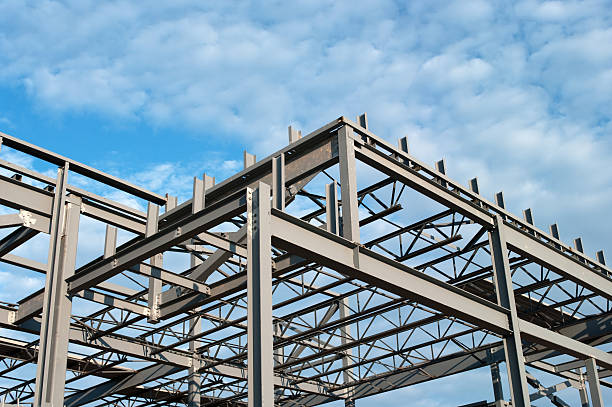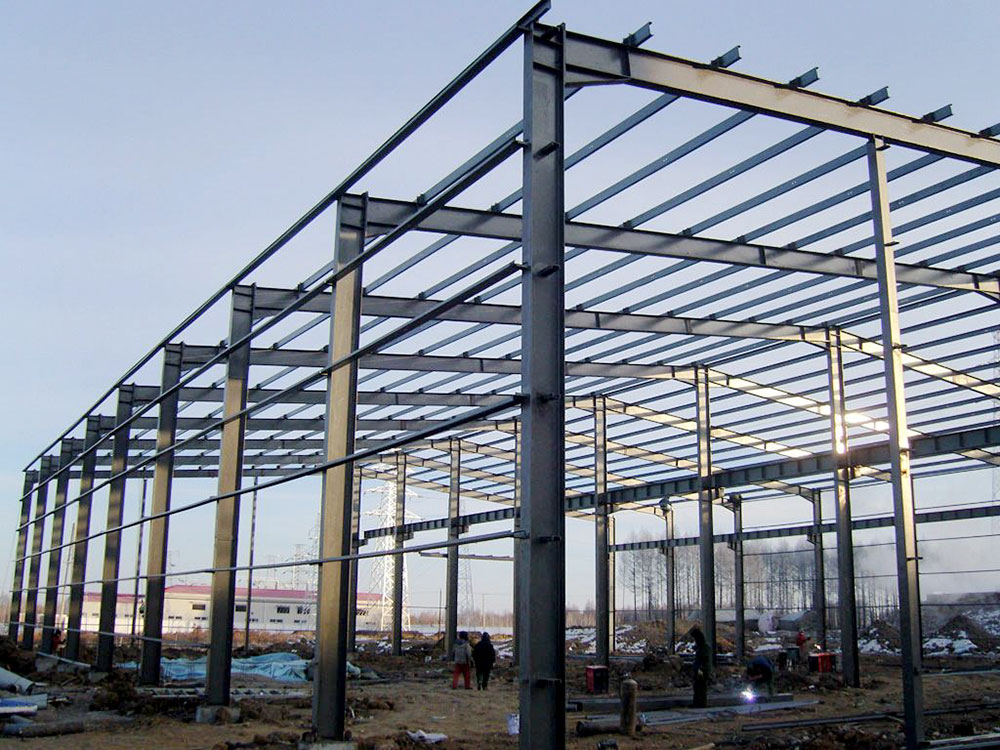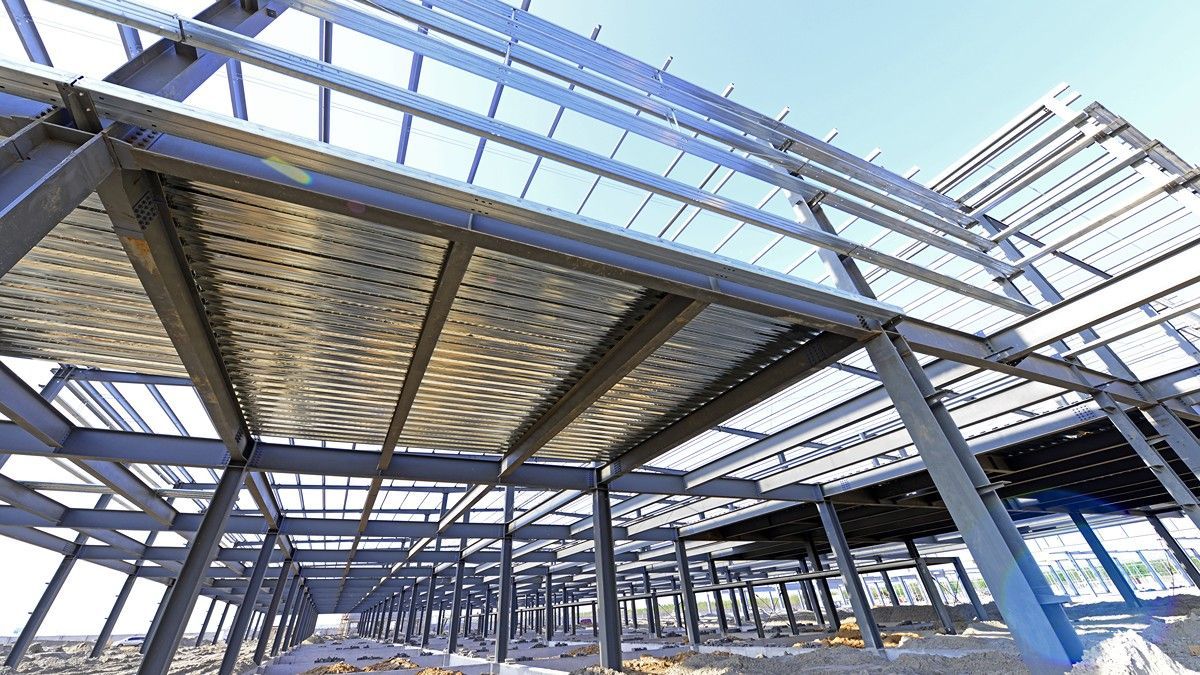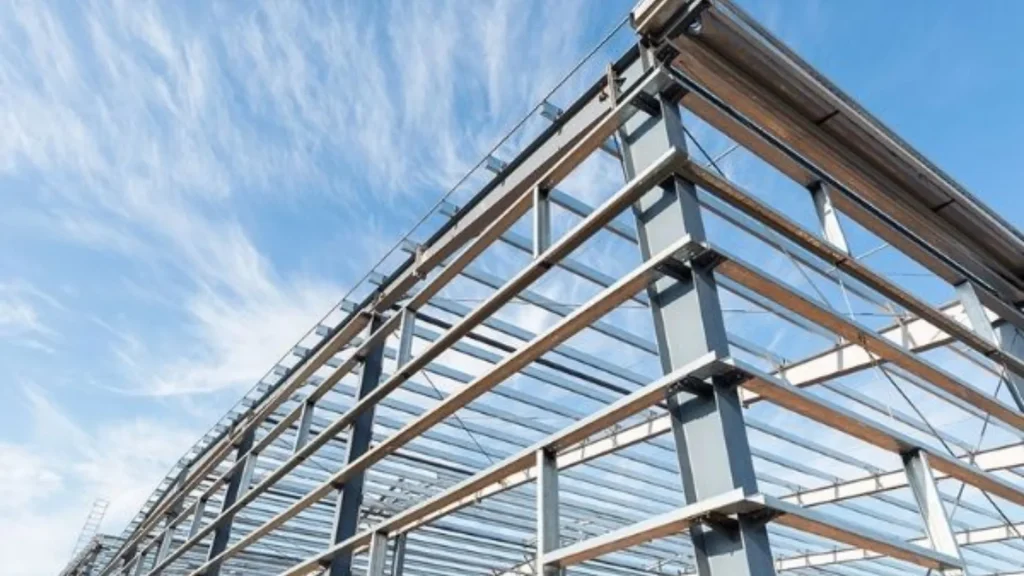Effective Steel Building Painting and Finishing Techniques
Learn the best steel building painting and finishing techniques to protect structures and enhance aesthetics. Comprehensive tips and guide here.
Painting and finishing steel buildings is a crucial step in the construction and maintenance of steel structures. This article delves deep into steel building painting and finishing techniques, including the reasons for painting, types of paints used, standard painting processes, and practical tips for best results.
By understanding proper steel building painting and finishing techniques, you can ensure your steel structures are well-protected and maintain an attractive appearance in the long term.
1. Why is Steel Building Painting Necessary?
Painting steel buildings is not just about improving appearance; it’s a crucial step in protecting your long-term investment. Here are some main reasons why painting steel buildings is essential:
First, protection against corrosion. Steel, although strong, is vulnerable to oxidation that can cause rust. The paint layer acts as a barrier between the steel and the environment, preventing direct contact with oxygen and moisture that can trigger the corrosion process.
Second, increased durability. Proper paint can protect steel from various environmental elements such as UV rays, acid rain, and industrial pollutants. This helps significantly extend the life of the steel structure.
Third, aesthetic enhancement. Well-painted steel buildings are not only more visually appealing but can also increase property value. The right color and finish can make steel buildings look modern and well-maintained.
Fourth, regulatory compliance. Many building codes and safety regulations require painting of steel structures for security and maintenance purposes.
Fifth, energy efficiency. Some types of paint can aid in thermal insulation, reducing heat absorption in summer and heat loss in winter, thus improving the building’s energy efficiency.
Lastly, ease of maintenance. Well-painted surfaces are easier to clean and maintain compared to uncoated steel surfaces.
By understanding the importance of painting steel buildings, owners and managers can make the right decisions to effectively protect and maintain their steel structures.

2. Types of Paints for Steel Structures
Choosing the right type of paint is crucial in painting steel structures. Here are some common types of paint used for steel structures:
- Zinc-Rich Primers: These paints contain a high amount of zinc that provides cathodic protection to steel. The zinc sacrifices itself to protect the steel from corrosion. Zinc-rich primers are very effective for corrosive environments and are often used as a base layer.
- Epoxy Paints: Epoxy paints are known for their excellent durability and adhesion. They form a hard layer resistant to chemicals, abrasion, and moisture. Epoxy is often used as a middle layer in multi-layer painting systems.
- Polyurethane Paints: Polyurethane paints provide excellent resistance to UV rays and maintain gloss and color for a long time. These paints are often used as a top layer due to their resistance to weather and chemicals.
- Alkyd Paints: Alkyd paints are an economical choice that provides good protection against mild corrosion. These paints are easy to apply and dry quickly, making them popular for small to medium projects.
- Acrylic Paints: Acrylic paints offer good weather resistance and excellent color retention. These paints are also environmentally friendly as they are water-based and have low VOC (Volatile Organic Compounds) content.
- Fire-Resistant Paints (Intumescent Coatings): These paints are specially designed to provide fire protection to steel structures. When exposed to high heat, these paints expand and form an insulating layer that protects the steel from fire damage.
- Zinc Silicate Paints: These paints provide excellent cathodic protection and are resistant to abrasion. They are suitable for highly corrosive environments such as offshore structures or chemical industries.
The choice of paint type should consider factors such as environmental conditions, structure usage purpose, budget, and maintenance requirements. Often, a combination of several paint types in a multi-layer system provides the best protection for steel structures.

3. The Most Standardized Painting Process for Steel Structures
The standard painting process for steel structures involves several important stages to ensure optimal and long-lasting results. Here are the steps generally followed in a standardized steel structure painting process:
Surface Preparation:
- Cleaning: The steel surface must be cleaned of dirt, oil, rust, and other contaminants. Methods used can include solvent cleaning, alkaline cleaning, or steam cleaning.
- Sanding: The clean surface is then sanded to remove rust or old paint still adhering and create a suitable surface profile for paint adhesion.
- Blasting: For best results, blasting with sand or other abrasive materials is used to create an optimal surface profile and remove all contaminants.
Primer Application:
- After the surface is ready, a primer layer is applied. Zinc-rich primers are often used as they provide cathodic protection.
- The primer must be applied evenly with a thickness according to the manufacturer’s specifications.
- The primer drying time must be observed before proceeding to the next step.
Intermediate Layer Application (if needed):
- For additional protection, an intermediate layer such as epoxy can be applied.
- This layer provides additional thickness and enhances protection against corrosion.
Top Layer Application:
- The top layer, usually polyurethane or acrylic, is applied to provide protection against weather and UV, as well as give the final color and gloss.
- Application must be even and according to the recommended thickness.
Drying and Curing:
- Each layer must be given sufficient time to dry and cure before the application of the next layer or before the structure is used.
- Drying and curing times vary depending on the type of paint, layer thickness, temperature, and humidity.
Inspection and Testing:
- After the painting process is complete, a visual inspection is conducted to ensure there are no defects such as runs, bubbles, or unpainted areas.
- Dry Film Thickness (DFT) testing is performed to ensure the paint thickness meets specifications.
- Adhesion tests can also be conducted to ensure the paint adheres well to the steel surface.
Care and Maintenance:
- After painting is complete, it’s important to establish a routine inspection and maintenance schedule.
- This includes regular cleaning and immediate repair if there’s any damage to the paint layer.
This standardized painting process ensures that the steel structure receives maximum protection against corrosion and other environmental factors, while maintaining an aesthetic appearance in the long term. Compliance with industry standards and paint manufacturer specifications is crucial for optimal results.

4. Some Tips for Painting Steel Buildings
Here are some important tips to ensure optimal results when painting steel buildings:
Thorough Preparation:
- Never underestimate the preparation stage. A clean surface free from contaminants is key to successful painting.
- Use cleaning methods appropriate to the level of contamination and surface type.
Choose the Right Paint:
- Match the paint type with environmental conditions and the building’s intended use.
- Ensure compatibility between paint layers if using a multi-layer system.
Pay Attention to Environmental Conditions:
- Avoid painting in extreme weather conditions such as very high or low temperatures, or high humidity.
- Ideally, paint at temperatures between 10-35°C with relative humidity below 85%.
Correct Application:
- Follow manufacturer instructions regarding application method, layer thickness, and drying time.
- Use appropriate equipment in good condition for optimal results.
Safety Considerations:
- Always use personal protective equipment such as masks, goggles, and gloves when painting.
- Ensure adequate ventilation, especially when using solvent-based paints.
Conduct Testing:
- Perform a trial on a small area before painting the entire structure to ensure compatibility and desired results.
Post-Painting Care:
- Allow sufficient time for the paint to dry and fully cure before the building is used.
- Establish a routine inspection and maintenance schedule to maintain the paint condition.
Documentation:
- Record all painting details including paint type, batch number, application conditions, and painting date for future reference.
Consult with Experts:
- If in doubt, consult with painting experts or technical representatives from the paint manufacturer for specific advice.
By following these tips, you can significantly improve the quality and durability of your steel building painting results.

5. Conclusion
Painting and finishing steel buildings is a vital aspect of steel structure construction and maintenance. This process is not just about aesthetics, but also an important step in protecting long-term investments. By understanding the importance of painting, choosing the right type of paint, following a standardized painting process, and applying effective painting tips, building owners and managers can ensure their steel structures are well-protected and long-lasting.
It’s important to remember that painting steel buildings is not a one-time task. Routine maintenance and repainting according to schedule are key to maintaining the integrity of steel structures in the long term. With proper care, well-painted steel structures can last for years, providing added value and reliability to your building.


Post Comment